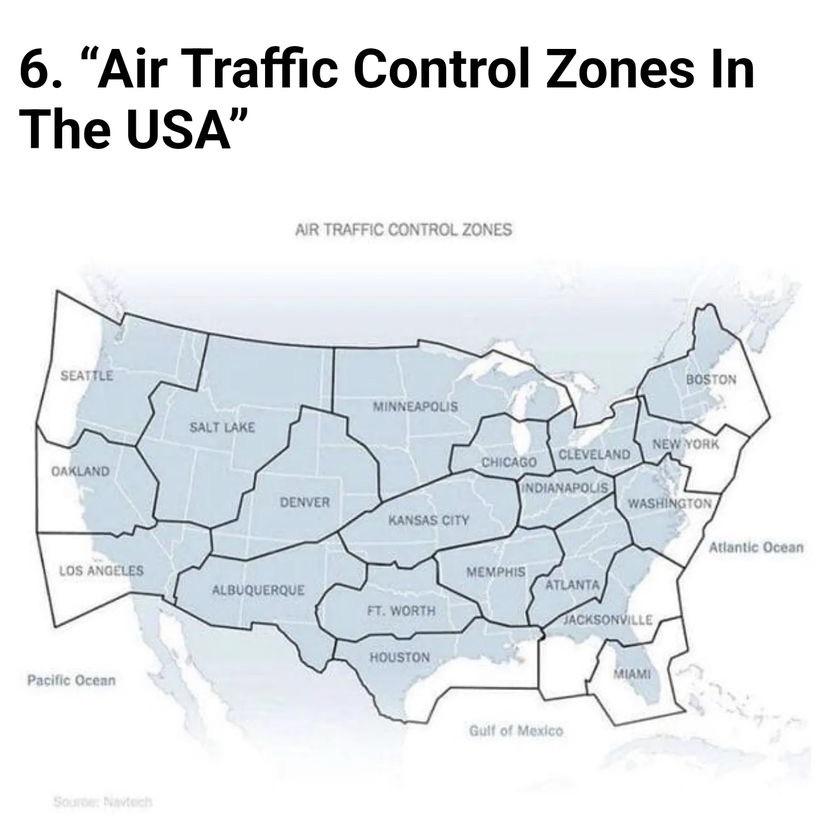The Race To Fix Air Traffic Control: Addressing The "I Don't Know Where You Are" Problem

Table of Contents
The Current State of Air Traffic Control Technology
Limitations of Radar Systems
Traditional radar systems, while foundational to air traffic control, have inherent limitations. These limitations significantly impact the accuracy and reliability of aircraft tracking, especially in challenging conditions.
- Blind Spots: Radar systems have difficulty detecting aircraft in certain areas, particularly behind obstacles or in complex terrain.
- Weather Interference: Heavy rain, snow, or fog can severely degrade radar signals, reducing accuracy and range.
- Limited Resolution: Traditional radar struggles to distinguish between closely spaced aircraft or to track smaller, low-flying aircraft like drones.
- Interference: Radar signals can be interfered with by other electronic signals, leading to inaccurate readings.
For example, several incidents in the past have been linked to difficulties in tracking smaller aircraft due to radar limitations, highlighting the critical need for improved technology.
The Rise of ADS-B and its Challenges
Automatic Dependent Surveillance-Broadcast (ADS-B) technology represents a significant leap forward in aircraft tracking. By broadcasting their GPS-derived location, aircraft provide continuous position updates to ground stations and other aircraft. However, ADS-B isn't without its own limitations.
- Benefits of ADS-B:
- Increased accuracy and precision compared to radar.
- Wider coverage, particularly in areas where radar coverage is limited.
- Reduced reliance on ground-based infrastructure.
- Drawbacks of ADS-B:
- Complete dependence on GPS functionality. GPS outages can cripple the system.
- Vulnerability to signal interference and potential spoofing attacks.
- High initial implementation costs for aircraft and ground infrastructure.
The ongoing effort to integrate ADS-B globally is crucial for improving air traffic management, but widespread adoption requires addressing these challenges and ensuring seamless interoperability between different systems.
Emerging Technologies for Enhanced Aircraft Tracking
Next Generation Air Transportation System (NextGen)
The NextGen system in the US, and similar initiatives globally, aims to revolutionize air traffic management. This involves a transition to satellite-based augmentation systems, data communication technologies, and advanced automation to enhance situational awareness and efficiency.
- Features of NextGen:
- Improved precision navigation and landing systems.
- Enhanced data communication between aircraft and ground control.
- Advanced conflict alert and resolution systems.
- Optimized flight trajectories for fuel efficiency and reduced delays.
Implementing NextGen involves significant infrastructure upgrades and technological integration, presenting considerable challenges in terms of cost and coordination.
Artificial Intelligence and Machine Learning in Air Traffic Control
AI and ML are increasingly being incorporated into air traffic control systems to enhance efficiency and safety. These technologies offer significant potential for improving situational awareness and predictive capabilities.
- Potential Applications of AI/ML in ATC:
- Predicting potential conflicts between aircraft and alerting controllers.
- Optimizing flight paths to minimize delays and fuel consumption.
- Detecting anomalies and potential safety hazards in real-time.
- Automating routine tasks, freeing up controllers to focus on critical situations.
The ethical and safety implications of using AI in such a critical system must be thoroughly considered and addressed before widespread implementation.
Unmanned Aircraft System (UAS) Traffic Management (UTM)
The integration of drones into the airspace presents unique challenges for air traffic control. UTM systems are being developed to manage the increasing number of unmanned aircraft safely and efficiently.
- Unique Challenges of UTM:
- Tracking a vastly larger number of smaller, potentially less predictable aircraft.
- Maintaining communication and control over drones in diverse environments.
- Ensuring secure and reliable drone identification and authorization.
Technologies like Detect and Avoid (DAA) systems and remote identification technologies are crucial for the safe integration of drones into the national airspace system.
The Importance of Collaboration and Standardization
International Cooperation
Global cooperation is paramount for effective air traffic management. International organizations like the International Civil Aviation Organization (ICAO) play a vital role in setting standards and facilitating collaboration between nations.
- Key Roles of International Organizations:
- Developing and enforcing international safety standards.
- Promoting interoperability between different air traffic management systems.
- Facilitating the exchange of information and best practices.
Data Sharing and Cybersecurity
Secure data sharing between airlines, airports, and air traffic control centers is essential for effective air traffic management. Robust cybersecurity measures are equally vital to protect against potential threats.
- Security Threats and Mitigation Strategies:
- Cyberattacks targeting ATC systems could disrupt operations and compromise safety.
- Data breaches could expose sensitive flight information.
- Implementing strong encryption, access controls, and intrusion detection systems is crucial.
Conclusion
The "I don't know where you are" problem in air traffic control presents a significant challenge, but technological advancements and increased international cooperation are paving the way for safer and more efficient skies. The integration of ADS-B, NextGen systems, AI/ML, and robust UTM systems holds immense promise for enhancing aircraft tracking and overall air navigation. The race to fix air traffic control is crucial for ensuring safer skies. Stay informed about the latest developments in air traffic management technologies and support initiatives that prioritize flight safety and enhanced aircraft tracking.

Featured Posts
-
 Gewinnzahlen Lotto 6aus49 Mittwoch 9 4 2025 Ziehungsergebnis
May 07, 2025
Gewinnzahlen Lotto 6aus49 Mittwoch 9 4 2025 Ziehungsergebnis
May 07, 2025 -
 Podcast Stan Wyjatkowy Odcinki Onetu I Newsweeka
May 07, 2025
Podcast Stan Wyjatkowy Odcinki Onetu I Newsweeka
May 07, 2025 -
 Nba 2 0
May 07, 2025
Nba 2 0
May 07, 2025 -
 Jenna Ortega And Glen Powell New Fantasy Film To Begin Filming In London
May 07, 2025
Jenna Ortega And Glen Powell New Fantasy Film To Begin Filming In London
May 07, 2025 -
 Rekordsmen N Kh L Po Silovym Priemam Zavershaet Kareru
May 07, 2025
Rekordsmen N Kh L Po Silovym Priemam Zavershaet Kareru
May 07, 2025
